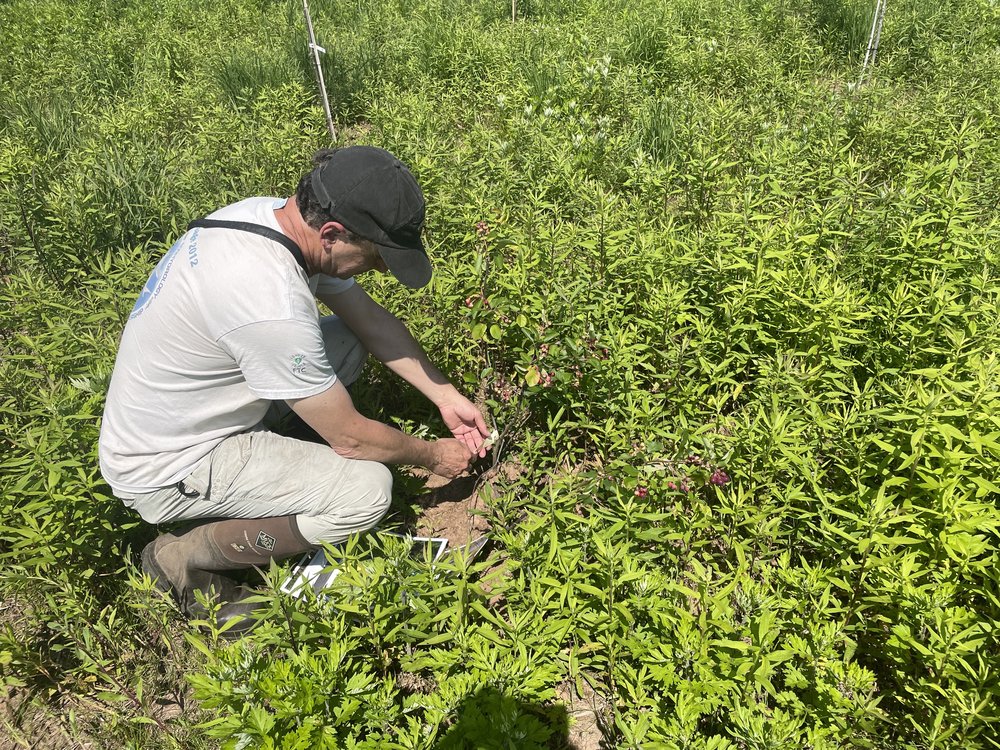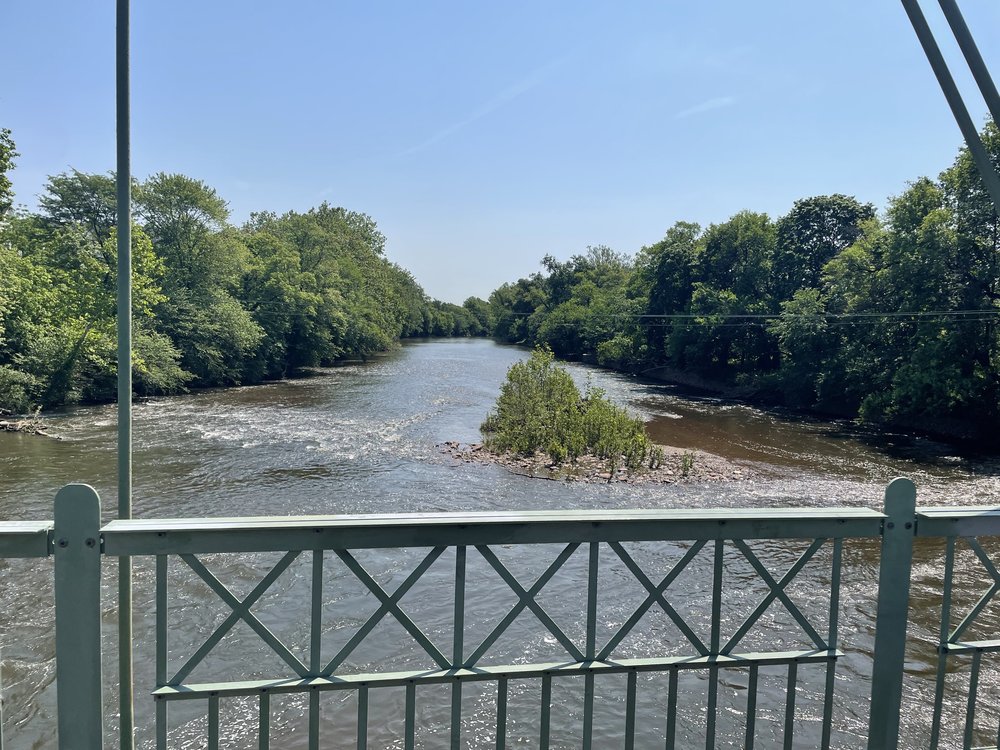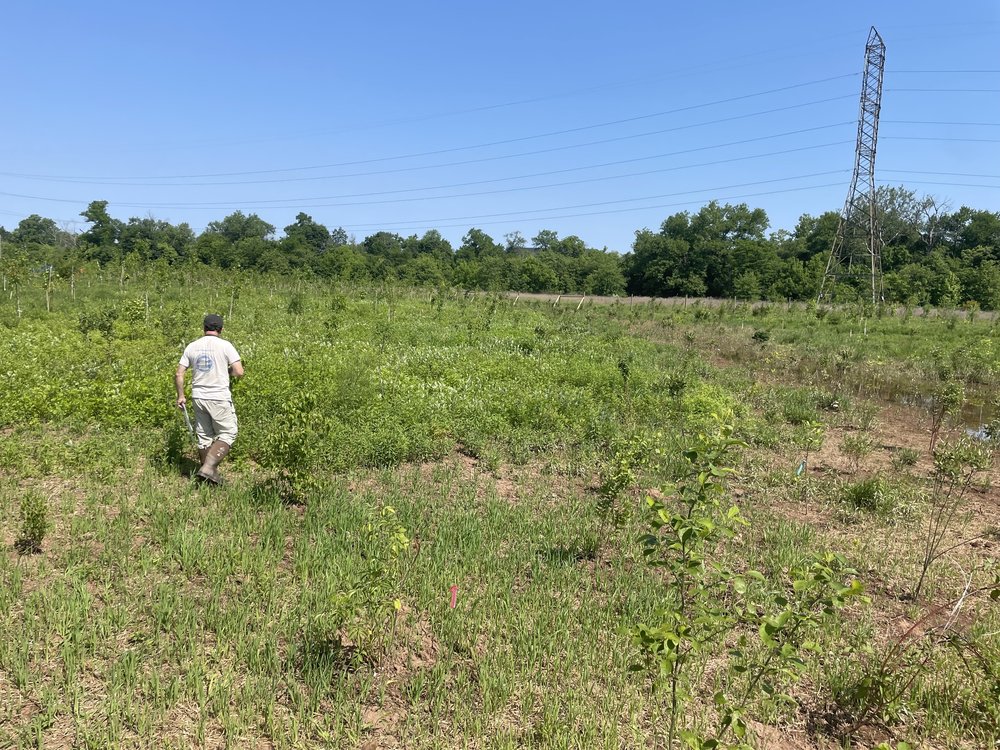To combat flooding in NJ, conservationists turn farmland into forest
June 16, 2025, 11 a.m.
John Jengo and his team are on a mission to use natural resources to counteract the effects of climate change and increased flooding in New Jersey.

John Jengo has a job you probably didn’t know existed. Since May, he’s been taking a 112 acre field alongside the Raritan River in Somerset County that’s been New Jersey farmland since the 1600s and turning it back into a forest. His goal is to create a natural sponge that can help prevent the kind of storm surges that devastated this part of the state in 2021, when Hurricane Ida's remnants tore through the region.
“The river floods now and flows over these empty fields and then floods the towns,” Jengo said. “But what if you had thousands upon thousands of trees and shrubs, not only to slow and decelerate that water, but to absorb the water.”
Jengo is a geologist with the environmental engineering firm, Stantec, where he’s led an effort to remove dams from the Raritan River and restore migratory fish routes. Now, his work is on land that’s dry most of the time, barring heavy rain.
He and his team are in the midst of a decadelong project to plant over 50,000 oaks, maples, spruces and an array of other types of trees, along with a couple thousand shrubs on a plot of land owned by Duke Farms in Raritan. The site is upriver from two towns that saw some of Hurricane Ida’s worst devastation – Manville and Bound Brook. When 11 inches of rain fell on the region in 2021, the Raritan River and other bodies of water in New Jersey overflowed, flooding — and in some cases destroying — thousands of homes and killing 30 people.
Jengo said that transforming these fields into wooded areas will help prevent future damage.
“ Flood waters that would've been in someone's basement in Manville and Bound Brook [will be] here at Duke Farms percolating into the groundwater and sustaining plants,” Jengo said.

Manville Mayor Rich Onderko, who said traces of Ida’s devastation can still be seen in his town nearly four years later, lauded the project.
“ Every little bit we can do to help absorb flood waters and restore our environment is probably the best news we've heard around here in a long time,” Onderko said.
“I'm still looking at banged up homes in my community with busted up foundations that have sat abandoned,” he said. “It leads to a quality of life issue in a neighborhood where you have high grass and it attracts rodents.”
Some Manville residents whose homes were severely damaged during Ida continue to fight for buy-outs from the state and relief money to cover repairs and pay off debt from being displaced during the storm.
This project at Duke Farms is funded by a settlement from an environmental lawsuit. In 2024, pharmaceutical company Wyeth Holdings was found liable for decades of damage to the local groundwater from its chemical factory that sat next to the Raritan River before it closed in 1999.
“This project is an investment that's being made by that responsible party to really invest in what is the restoration of a functioning floodplain ecosystem,” said Margaret Waldock, executive director of Duke Farms.
Pfizer Corporation acquired Wyeth in October 2009, 10 years after the site ceased operations.
Steven Danehy, a spokesperson for Pfizer, said the company expects the cost of this restoration will exceed $13 million.
“Pfizer has a long-standing commitment to protecting the environment, the health and safety of the general public and our employees, and the communities in which we operate,” Danehy said. “While we cannot speak to past actions and activities on the site, the company continues its dedication to remediating the site.”

Before anyone put a plant in the ground, Jengo’s team spent years testing to see which native species would still thrive in this land given that the climate and environment are very different from centuries ago. He said they tested about 9,000 different types of plants and trees on a 17-acre test site over the course of three years.
“ About 90% of what we planted still wanted to be here,” Jengo said.
His team expects they’ll be done putting all 53,000 plants and trees into the ground by next May. After that, there’s enough funding for Jengo’s team to steward the land for another five years.
”We will have scientists come out, measure the height of every tree and shrub, measure the stem thickness, look for signs of disease or predation, [and] make sure that the beneficial ground cover has not been taken over by invasive plants,” Jengo said.
Waldock said that Duke Farms is committed to looking after the new forest from into the future.
But there are limitations to what just 112-acres of reforested land can do to stave off flooding, Jengo admitted. To truly mitigate flooding in New Jersey, he said, the state would need to replicate it across “thousands and thousands” of acres.
“ I hope other people come here to Duke Farms and use this as a model for their own restorations elsewhere,” he said.
NJ lawmakers advance landmark legislation aimed at expanding urban farming NJ opens first green affordable housing. There might not be more like it.